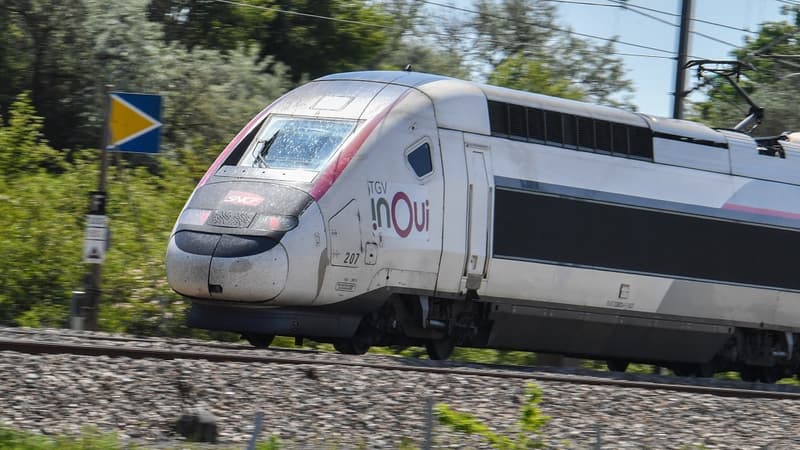To go on vacation this summer, millions of French people have taken the TGV. And if untimely breakdowns sometimes ruin departures and returns, they make us forget the technical feat represented by the French high-speed train. Few countries enjoy such a fast means of rail transport. Although, despite its pioneering status in this area, France has been overtaken by faster trains.
It is true that our TGV still holds the world rail speed record, established in 2007, with 574 km/h, under very specific test conditions and with a modified train to improve its performance. Nothing to do with the speed of commercial operation, which reaches a maximum of 320 km/h. Fast, but it is clear that today we can drive faster in other places, according to the ranking of the fastest trains in the world, published every year and revealed by CNN.
China at the forefront of “TTGV”
The TGV is now the fourth fastest train in the world. In front of us is China and its Maglev train, the current version of which runs at 460 km/h near Shanghai. And a new version tested a few months ago will exceed 600 km/h, with a long-term goal of 1,000 km/h. You could call it TTGV, a very high-speed train, faster than a plane.
It must be said that it is a train that flies, or almost. The Maglev, English abbreviation for “magnetic levitation”, are electromagnetic levitation trains. The principle is more or less the same as when trying to bring two magnets together: the train and the rail repel each other. As a result, there is no more friction, which makes it possible to reach phenomenal speeds and go 10 kilometers per minute. China wants to deploy them all over the country.
Number 2 in the ranking is also occupied by a Chinese train, this one on rails: the Fuxing, at 350 km/h at commercial speed. Little bonus point: it is autonomous, without a driver inside.
On the third step of the podium are the Germans and their ICE3, 330 km/h. And number 4 therefore, our beloved TGV, 320 km/h, on par with the Japanese Shinkansen.
The new TGVs will not go faster
If this qualifying looks like a sprint race, then we shouldn’t get our hopes up too high. A Paris-Marseille in an hour and a half, it’s a dream but unfortunately it’s not for tomorrow. Apparently speed is no longer SNCF’s strategic priority.
The new version, the TGV M, which will enter service in the coming months, has other ambitions: the same speed, but new aerodynamics that will allow it to consume 20% less energy; more modularity, with seats that can be added or removed on demand, to transform 1st class into 2nd class or add spaces for bicycles, as needed; more efficient wifi too…
A choice that we can regret, thinking that going even faster is not only very practical, but would make rail more competitive with air transport on short journeys. A Paris-Barcelona in 4 or 5 hours compared to 7 hours today, for example. And what’s more, a spark remains: having the fastest train in the world was also for a long time one of the great industrial prides of France, a showcase of our technology and our know-how.
Speed requires colossal investments
The problem is also economic. These “super bullet trains” are trains that are expensive to develop. And then there’s all the infrastructure that goes with it, especially the rails, which need to be perfectly aligned to a tolerance of less than a millimeter. On the other hand, managing the maintenance of an entire railway network is extremely expensive. And the faster the trains go, the higher the costs.
We also see it with hyperloop-type projects, these trains that are supposed to travel at very high speed in tubes, a project started by Elon Musk and tested by various companies around the world. Today, some doubt its feasibility, especially since it is extremely expensive. In documents leaked in 2016, it was estimated to cost $60 million per kilometer. By comparison, LGV lines range between 15 and 20 million. Inevitably, this is reflected at some point in the price of tickets, but these are precisely the nerves of the war on French rail at the moment.
Source: BFM TV


